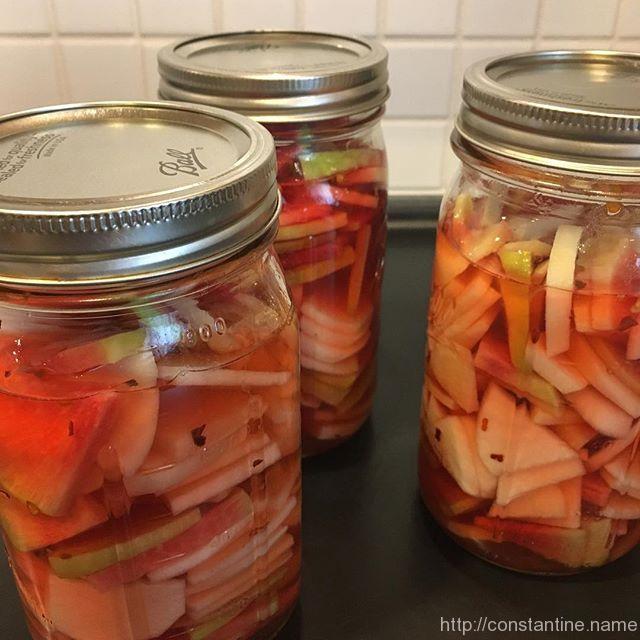The universe is full of magical things patiently waiting for our wits to grow sharper.
~ Eden Phillpotts
slip:4a1513.
The universe is full of magical things patiently waiting for our wits to grow sharper.
~ Eden Phillpotts
slip:4a1513.
The only thing better than well-thought-out articles, with a nice water–color image, that refer to a good book, that tie together some thoughts I was already having, published on the open web making the Internet a better place? When it’s written by someone I know personally. Here, have this…
The good news is that, according to Csikszentmihalyi, it is totally in my power to maintain flow, or at least maximize the amount of time spent in the flow state. After all, the attention split between the conflicting objectives happens entirely in my head. The trick, for the lack of a better word, is to convince myself to take interest in what needs to be done and to apply mental energy in order to increase the complexity of the activity at hand.
~ Peter Oshkai from, More on flow and photography
slip:4upemo1.
For me, that attention split—my perception that there actually exist conflicting objectives—is the source of struggle. When I simply don’t invent the need for anything I enjoy doing to be a successful business… Boop. It’s all pleasant creation, heavy lifting and flow state.
ɕ
Reading time: About 4 minutes, 900 words
Get 7 for Sunday in your inbox. → Subscribe here.
This issue is https://7forsunday.com/18
A million years from now, when alien anthropologists begin gathering evidence about what humans were like, they will definitely want to dig up the Self-help and Spiritual/Religion sections of our bookstores and libraries. There they will find direct evidence of what we yearned for and struggled with.
~ David Cain from, Trying to Be More Present Isn’t Enough
slip:4uraty1.
For some reason ( <- sarcasm alert ) my mind went directly from my title, to More cowbell. Which I’m linking to, on the off-chance you’ve not seen it. But to Cain’s topic I’ll simply add that it’s really (really REALLY) clear to me that I am the source of all my stress, anxiety, and problems. Certainly, there are injuries and trauma in my past—oh the stories I’ll not tell. Every time I turn and face the strange (hat tip David Bowie, rest in piece) I find it’s all smoke and mirrors. Every. Single. Time that I stop, and ask myself: What exactly is the thing that I’m anxious about, wigged-out about, pissed-off about, and—yes this too is a problem—excited about… Be clear, Craig. Use “i” language. Then I simply do it, or I delete it from my life. Bliss. Calm presence. The sun comes out and my mouth makes that strange shape y’all call a “smile.”
ɕ
Somewhere behind the athlete you’ve become, and the hours of practice, and the coaches who have pushed you, is a little girl who fell in love with the game and never looked back… play for her.
~ Annie Mist Þórisdóttir
slip:4a753.
MUCH ABIDES —
Tho’ much is taken, much abides; And tho’
we are not now that strength which in old days
moved Earth and Heaven, that which we are, we are;
one equal temper of heroic hearts,
made weak by time and fate, but strong in will
to strive, to seek, to find, and not to yield.
~ Alfred Lord Tennyson
I’m not even asking that look back at what you’ve written. Simply write a couple thoughts, (or more than a couple, if you wish.)
ɕ
Arrived in the middle? Visit the first post, Where to begin?
(The entire series is available to download as a PDF ebook.)
You know what the best thing about being an entrepreneur is? That you never have to experience self-doubt, the way people with normal day jobs do.
~ Hugh MacLeod
Ha. I was just kidding. Actually, as an entrepreneur, you have self-doubt coming out of your pores like cold sweat. And that’s on a good day.
slip:4a962.
A “local maximum” is a nearby, tall hill. If you find you’re standing in a puddle and the water is rising, walking uphill is a great idea. This will lead you to a local maximum. “Local” means a maximum which you can find by simply heading ”up” from where you are.
Imagine you have a project under discussion. You and your team are thinking, talking and writing [and editing and erasing bits here and there] on the whiteboard as you capture the project you are imagining. Because you have some perspective— because you can see the entire idea as it’s laid out on the board, you can probably find a maximum better than just a “local” one. You can notice broad connections, and realize that (for example) if you do some extra bit of that’s-not-obvious work, then these two far-apart pieces will give us this new feature. Hey! …that’s better, and it’s not a simple improvement—that is, it’s not simply directly up out of this rising puddle of water.
But it’s still a local maximum. Sure, it’s not the one immediately adjacent to the puddle. But it’s still a maximum in the context of what’s on the board.
What happens if, after you are done— after you’ve got the best solution you can image— What happens if you note the key features that are the “must haves”, and then you entirely erase the board. (This is a metaphor. If you do this for real, definitely take a photo before erasing!)
Now take your blank board and write in the things you identified as the key parts before you erased. Now build the thing again.
Did you get the exact same thing you had before? If not, what exactly is missing, or added, in the new version? Is this version better, or worse? What if you’re whiteboarding about something that you cannot reset and start over— You can easily erase the whiteboard, but not the actual thing. Can you learn something from doing the “erase the whiteboard” exercise that would enable you do something not normally obvious…
…to head down the hill, off your current local maximum, to a hill you can’t see from where you currently are. What if that other hill had all the current great stuff—not everything, but the great parts—and it had something else?
ɕ
Society has any number of pressing needs that are crying out to be tackled. But there’s a need that everyone can start addressing immediately — no experience or Kickstarter campaign required: regularly showing more human kindness.
slip:4uaowa1.
Many years ago, my mother bought me a little metal rectangular paper weight which says, “No act of kindness, no matter how small, is ever wasted.” The type is laid in lines, and the, “no matter how small” is teeny-tiny so each time I read it, I have to look closely.
It also helps me remember to look a little more closely throughout my day.
ɕ
What drives personal growth and resilience in the face of immense physical, emotional, and cultural challenges?
Ševo Saša is best-known as an amazing and creative mover, and the founder of the Skochypstiks clothing line. In this interview he shares the story of his Parkour beginnings after the collapse of Yugoslavia, and his motivation for overcoming a devastating injury in his youth. Sasa’s love of people and profound discipline have enabled him to thrive amidst the cycles of life, and have lead him to tremendous personal growth.
It doesn’t happen with everyone. Everybody can motivate us in different ways, this is true, but this special moment is something that I will remember forever. Because I did something that I really didn’t want to do, I kind of refused it with all my body, with everything, and when we ended I think I hugged him so hard, I was so happy doing this.
~ Ševo Saša (14:00)
The conversation explores the transformative journey from a war-torn Balkan region, navigating through cultural and personal challenges to find purpose and resilience in parkour. The discussion begins with the historical context of Yugoslavia’s dissolution and the challenges of displacement, providing a backdrop to his initial experiences with movement and the foundational influence of his father. Overcoming severe physical injuries, Saša develops discipline through self-directed training and a deep love for movement.
The narrative progresses into his parkour evolution, shaped by diverse environments and communities. From training in Serbia to pioneering connections between neighboring Balkan countries through parkour, the conversation emphasizes the significance of shared experiences. Saša reflects on the broader cultural impact of these connections, uniting people across former divisions, and concludes by highlighting the importance of love, discipline, and people in his practice.
Takeaways
Love for movement — A central theme that inspired dedication and growth in parkour.
Impact of displacement — How personal and cultural history shaped his outlook and resilience.
Discipline as a foundation — Rigorous self-training and perseverance despite physical and mental barriers.
Role of community — The importance of shared experiences in parkour to build connections and unity.
Parkour as a bridge — Its role in uniting people across post-war Balkan countries.
Adapting to environments — Embracing change and new challenges to drive personal growth.
Transformative experiences — How struggles, such as the 101 training, pushed personal limits and created lasting memories.
The power of connection — Focusing on people and relationships over obstacles or achievements.
Resources
Laurent Piemontesi — Insight into the “101” quadrupedal training exercises.
Colin McRae Rally Video Game — A part of Sasa’s recovery story and early life context.
(Written with help from Chat-GPT.)
ɕ

Thanks @wildfoxfarm! Refrig-pickling for several weeks of nibbling.
ɕ
My father used to say, “Don’t raise your voice. Improve your argument.”
slip:4a41.
The Senate Judiciary Committee spent the day looking into recent data thefts at Target and Neiman Marcus. Lawmakers know there is a big problem, but they are struggling with what role the federal government should play is creating new standards to safeguard consumer data.
~ Jim Zarroli from, Senate Steps Into The Data Breach Controversy
slip:4unose2.
Yeah. I said this before.
ɕ

5 yeras later, new front door.
ɕ